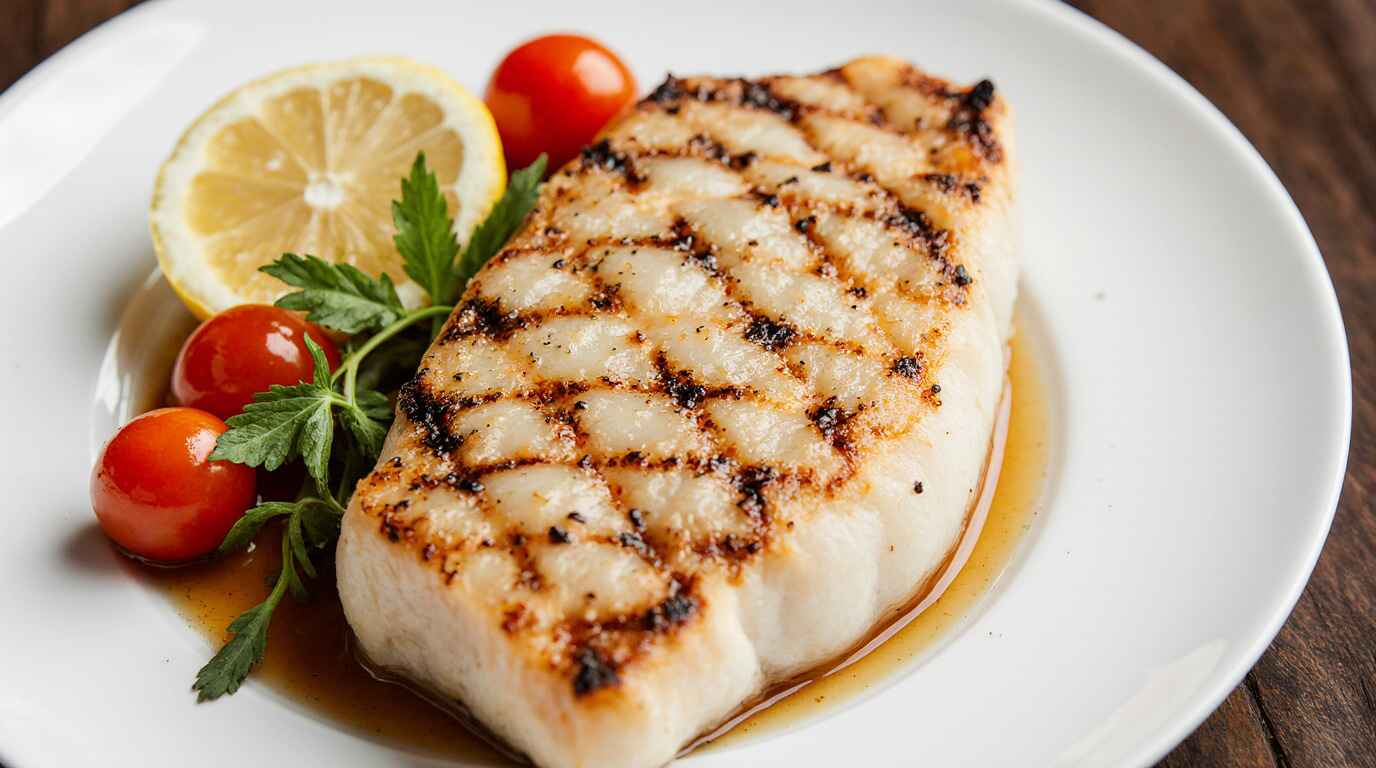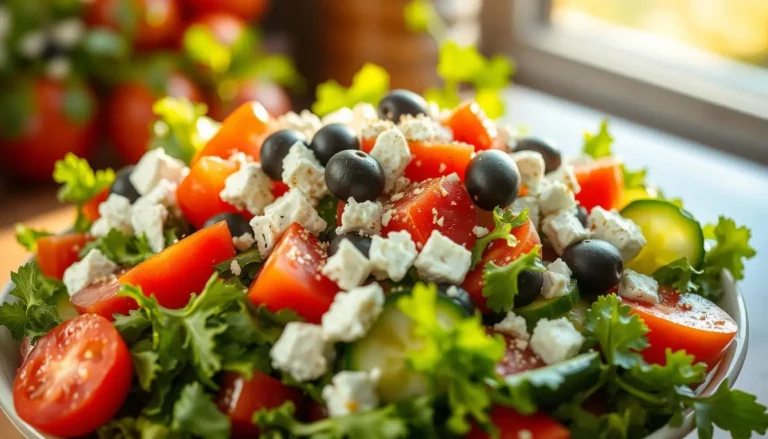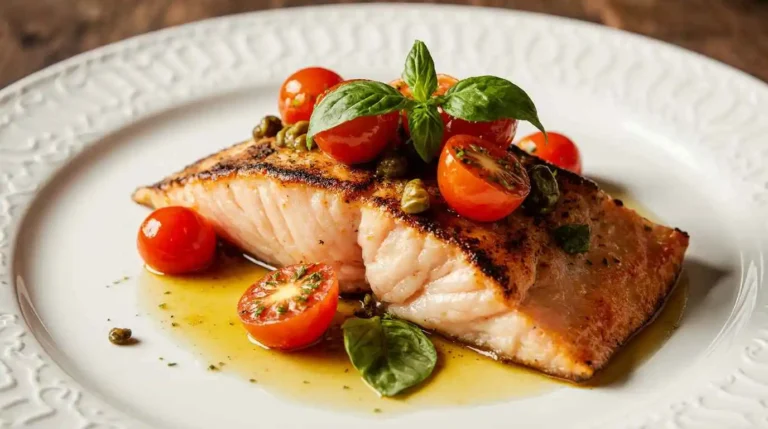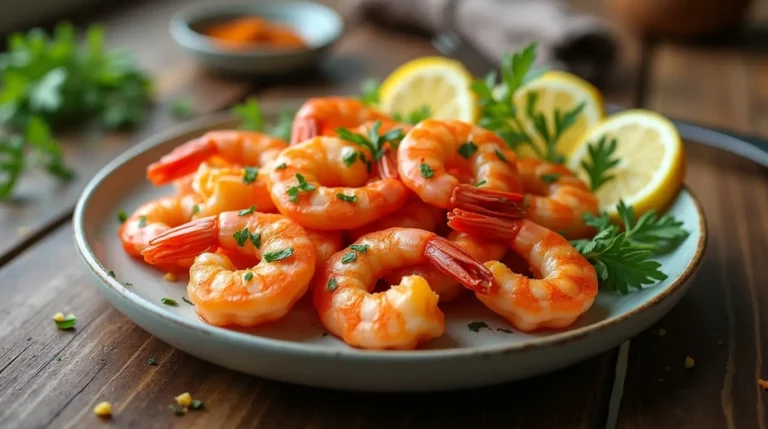How to Cook Swordfish: Pro Secrets for Amazing Fish
Imagine that you are in your kitchen with a lovely swordfish steak that will make you have an excellent meal. But then that dreaded feeling of uncertainty sets in, will you turn this fine piece of fish into something special, or will it turn out to be stiff and bland? You are not alone in facing this cooking challenge. Learning how to cook swordfish takes your seafood kitchen game to a new level, making your home kitchen a restaurant-quality space.
This exhaustive guide turns fearful indecisiveness into assured professionalism. Whether it is your first time preparing a swordfish dinner or you have already mastered the cooking process, the following tried-and-true methods will guarantee that your swordfish will be delicious and will leave your family and guests in awe.
Table of Contents
The Platform to Your Success in the Kitchen
However, before exploring the cooking methods, it is essential to understand what makes swordfish unique among the variety of seafood available. This outstanding fish has a meaty texture that cannot be compared to that of fragile fish, such as sole or flounder. Swordfish retains its form when cooked, unlike flaky white fish, and is therefore incredibly forgiving to those just learning to cook.
Selecting Quality Swordfish
The process of choosing good fish is the starting point of your success. Fresh swordfish is pinkish-white in colour and has no brown spots, and may have no fishy smell. The meat should be firm to the touch, and when pressed with a finger, it should spring back. When purchasing frozen swordfish, ensure that there are no visible ice crystals or freezer burn in the packaging, as this indicates improper storage.
Nutritional Benefits
Swordfish is nutritionally outstanding in terms of its contribution to a health-based meal plan. Each serving contains approximately 25 grams of high-quality protein and includes the necessary omega-3 fatty acids that support heart and brain health. Nevertheless, pregnant women are advised to consume it in moderation due to mercury levels, which is a factor to discuss with your physician.
Critical Preparation Methods
Before a person learns how to cook swordfish, it is essential to prepare well to achieve excellent results. Remove your fish from the fridge 15-20 minutes before you plan to cook it, and it will cook evenly throughout. This easy step prevents overcooking on the outside and undercooking on the inside.
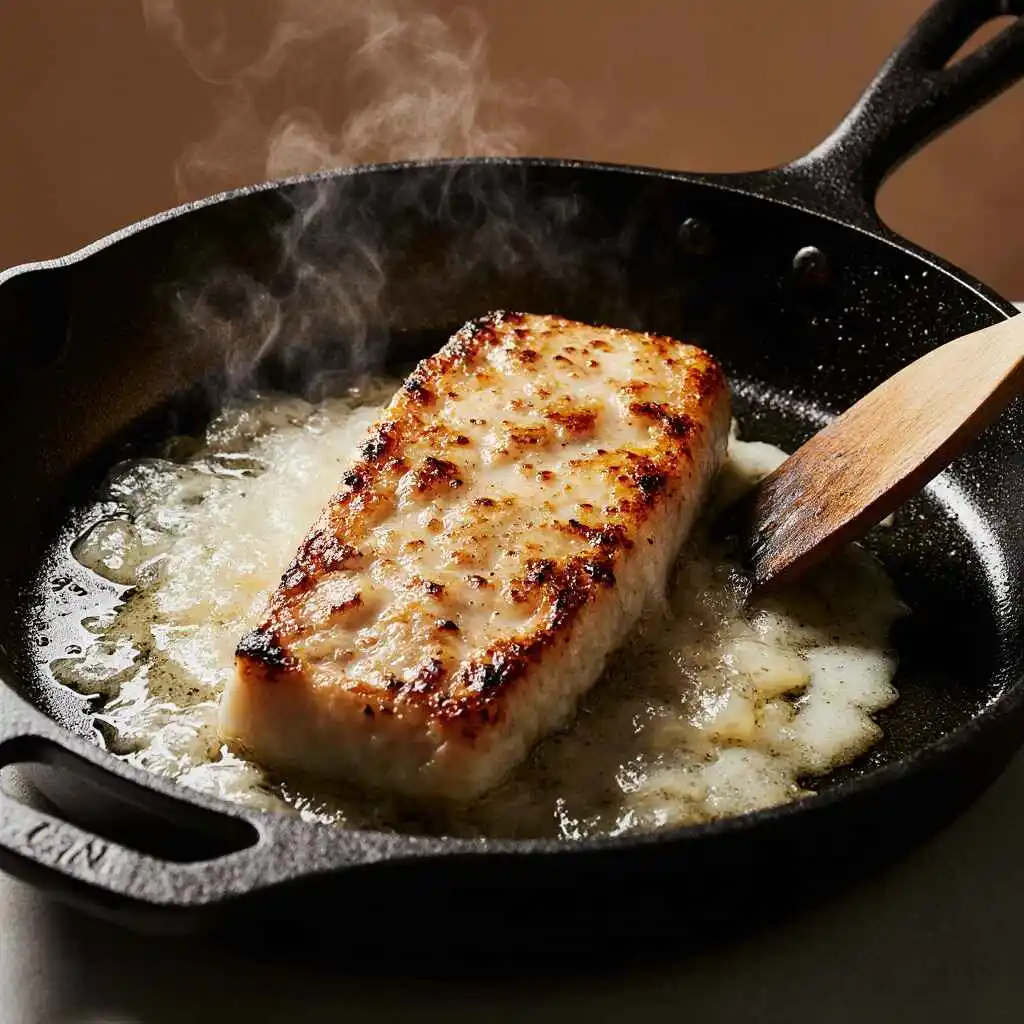
Pre-Cooking Steps
- Dry thoroughly: Gently pat your swordfish dry with paper towels. Surface moisture prevents the meat from searing properly and may lead to the dangerous splashing of oil during the cooking process.
- Season in advance: Salt and pepper your fish liberally at least 10 minutes before cooking, so that the salt and pepper can be absorbed into the flesh and contribute to the natural flavours.
- Trim dark meat: If your swordfish steaks have any dark red meat on the sides, cut this off. Although not detrimental, this amount has the potential to add a more intense, unpleasantly flavored taste that can overpower your well-thought-out seasonings.
Recipe Grilled Swordfish: The Classical Way
The grilling process produces the much-desired char marks on the swordfish, and it remains juicy and tender on the inside. In your grilled swordfish recipe, you start preparing the grill and controlling its temperature.
Foolproof Grilled Swordfish Procedure
Begin by heating your grill to medium-high heat, or approximately 400°F to 450°F. Make sure to clean and oil your grill grates thoroughly so the fish does not stick. Nothing is worse than a beautiful piece of fish with half of it still attached to the grill.
Basic Marinade Recipe
Make a basic marinade by mixing:
- 3 tbs olive oil
- 2 Tbs. lemon juice
- 2 cloves of chopped garlic
- 1 tsp oregano
- Black pepper and salt
Your swordfish steaks should marinate for no more than 30 minutes. The fish may become mushy because the acid content breaks down the protein excessively, requiring a longer marination time.
Grilling Technique
Grilling swordfish is such that time is of the essence. Place your steaks on the hottest part of the grill and leave them there without touching them for 4-5 minutes. This forms Instagram-worthy grill marks during the process of creating a flavorful crust. Turn over and continue cooking for 3-4 more minutes, depending on the thickness of the meat.
Food safety requires an internal temperature of 145°F, but swordfish is not at its best when it reaches this mark; it is at its best when it is slightly below this temperature. The fish ought to be firm yet yield a little when it is pressed, and the middle ought to be opaque with the slightest touch of translucency.
How to Cook Swordfish in the Oven
Baking is the best method for cooking swordfish, as it enables beginners to learn how to prepare it in the oven. It is a more controlled method of cooking, minimizing the possibility of overcooking.
Baked Swordfish Mediterranean
Set your oven to 400°F. This temperature is sufficient to cook the fish all the way through while keeping the outside moist before the inside is fully cooked.
Ingredients and Assembly
Lay out your swordfish steaks in a shallow baking dish that has been lightly oiled. Put around them:
- Cherry tomatoes cut in half
- Red onion slices
- Kalamata olives
- Springs of fresh thyme
- Lemon slices
Toss everything in olive oil and season with salt, pepper, and a pinch of red pepper flakes. This mix will be a one-pot meal, and the vegetables will provide moisture to your fish, ensuring it stays moist throughout the cooking process.
Baking Instructions
Cook in the oven for 12-15 minutes, depending on the thickness of the steak. When your swordfish flakes easily with a fork and reaches an internal temperature of 145°F, it is done. Vegetables around will be just tender and saturated with the natural juices of the fish.
Pan-Seared Excellence: Restaurant Techniques At Home
Pan-searing can provide excellent results as long as it is done correctly and at the right time. The technique yields a golden crust on the outside with moisture on the inside, a hallmark of professional cooking.
Pan-Searing Method
Place a heavy-bottom skillet (cast iron is ideal) over medium-high heat. Add a tablespoon of high-smoke-point oil, such as avocado or grapeseed oil. When the oil shines without smoking, your pan is ready.
Delicately lay your cooked swordfish in the pan, and place it farther back so that the oil will not splash. Do not turn or flip the fish too soon. Allow it to grill over the heat without opening the lid, allowing it to develop a golden crust that traps the juices.
The Arroser Technique
Turn over with a thin spatula and add one tablespoon of butter to the pan. When it is melted and foaming, tilt the pan slightly and baste the fish with the butter using a spoon. This is called arroser, which makes the dish rich but prevents the top from drying out.
Cook for another 3-4 minutes, then taste again. Your completed swordfish must look beautiful, with a golden crust and soft, flaky interior.
Flavor Enhancing Strategies
Swordfish recipes that work depend on supplementary rather than overwhelming seasonings. The flavor of the fish is light, slightly sweet, and it perfectly complements citrus, herbs, and the components of Mediterranean cuisine.
Winning Flavor Combinations
Think of these winning flavor combinations:
- Classic Lemon-Herb: The fresh lemon juice, chopped parsley, and minced garlic will provide a clean and bright flavor profile that complements, rather than covers, the fish flavor.
- Mediterranean Influence: Mix olive tapenade, sun-dried tomatoes, and fresh basil to create a classy flavor combination that will elevate plain swordfish into a beautiful main dish.
- Asian Inspiration: A light glaze of soy sauce, honey, and fresh ginger gives it an exotic flavor yet keeps the fish very delicate.
The cream-based, heavy sauces that may overpower the delicate flavor of the swordfish must be avoided. Instead, use light vinaigrettes, hand sauces, and sautés; sauté the cooking juices to enhance their flavor.

Control of Temperature and Timing
Knowledge of the optimal temperatures for cooking swordfish helps avoid the most common mistakes in preparing this dish. Swordfish is cooked to a higher temperature (145°F) than salmon, which many people prefer to be slightly undercooked.
Using a Thermometer
Invest in an instant-read thermometer to achieve consistent results. Please place it in the middle of the steak, but avoid touching the bones or the part that will be cooked. The temperature will still increase slightly after removing the heat due to carryover cooking, so remove your fish when it reaches 140-142°F.
Visual Doneness Cues
Doneness can also be determined visually: well-cooked swordfish will not have any translucent portions. When using a fork to test the flesh, it should flake easily but remain moist and tender.
Mistakes and Corrections
Even experienced cooks face difficulties when working with swordfish. Knowing these pitfalls will help you avoid the disappointing outcomes.
Common Mistakes to Avoid
- Overcooking: The most common mistake is overcooking. When swordfish is cooked above 145°F, it will turn dry and tough. A thermometer should be used, and the fish should be removed a little below when the target temperature is achieved, allowing carryover heat to complete the cooking process.
- Underseasoning: When you underseason your fish, you end up with a bland taste. Salt and leave to stand for at least 10 minutes before cooking, allowing the seasoning to penetrate the flesh.
- Excessive flipping: Flipping the fish too often can prevent it from being adequately seared, and the fish may break. Grilling, pan-searing, or broiling, don’t be tempted to turn or stir your swordfish until it easily releases the cooking surface.
Paired and Serving Suggestions
Your well-prepared swordfish should be served with equal consideration. Fish is accompanied by light, fresh sides that do not want to be the main attraction.
Vegetable Sides
Roasted vegetables, such as asparagus, zucchini, or bell peppers, add color and nutrition, and the slight charring will remind you of grilled fish. Arugula salad is dressed with lemon vinaigrette, which adds a peppery contrast to the bland fish.
Starch Options
As alternatives to starch, options such as herb-roasted potatoes, coconut rice, or creamy polenta are available. These are not overpowering to the light fish flavours.
Storage and Magic Leftover
When properly stored, cooked swordfish will remain of good quality for 3-4 days in the refrigerator. Place in plastic wrap or airtight containers to prevent moisture loss and absorption of odors.
Creative Leftover Ideas
Use leftovers to create new and thrilling dishes:
- Fish tacos: Swordfish flaked is a good fish taco with cabbage slaw and lime crema
- Grain bowls: Mediterranean grain bowls or pasta salads are enriched with cold swordfish protein
- Reheating: Day-old swordfish can be reheated in a low oven with a splash of white wine to put back moisture
It is Time to Start Your Culinary Journey
Learning how to cook swordfish creates endless possibilities in the kitchen. This versatile fish can be as simple as grilled or as elaborate as a Mediterranean feast, and is as easy as you are talented. Keep in mind that practice makes perfect, and every swordfish you cook will teach you something new about time, temperature, and balance of flavours.
The methods described here will serve as your starting point, but feel free to vary the seasonings, cooking methods, and accompaniments. The signature swordfish dishes you come up with will be based on your tastes and experiences and will become yours.
Ready to Begin?
Are you ready to cook swordfish? The easiest way to start is with the basic grilled or baked methods, and then progress to more advanced techniques as you gain confidence in your skills. Share these findings with your friends and family as well; there’s no better feeling than serving a perfectly cooked slice of swordfish that you’ve prepared yourself.
Your kitchen is here, and that gorgeous swordfish is ready to turn into something special. The only thing left to ask is: which of the cooking techniques will you learn first?
Tried This Recipe? Tell Us What You Think!
There are no reviews yet. Be the first one to write one.

